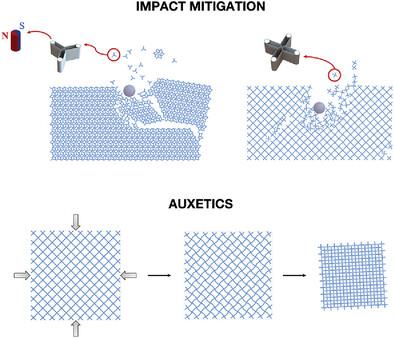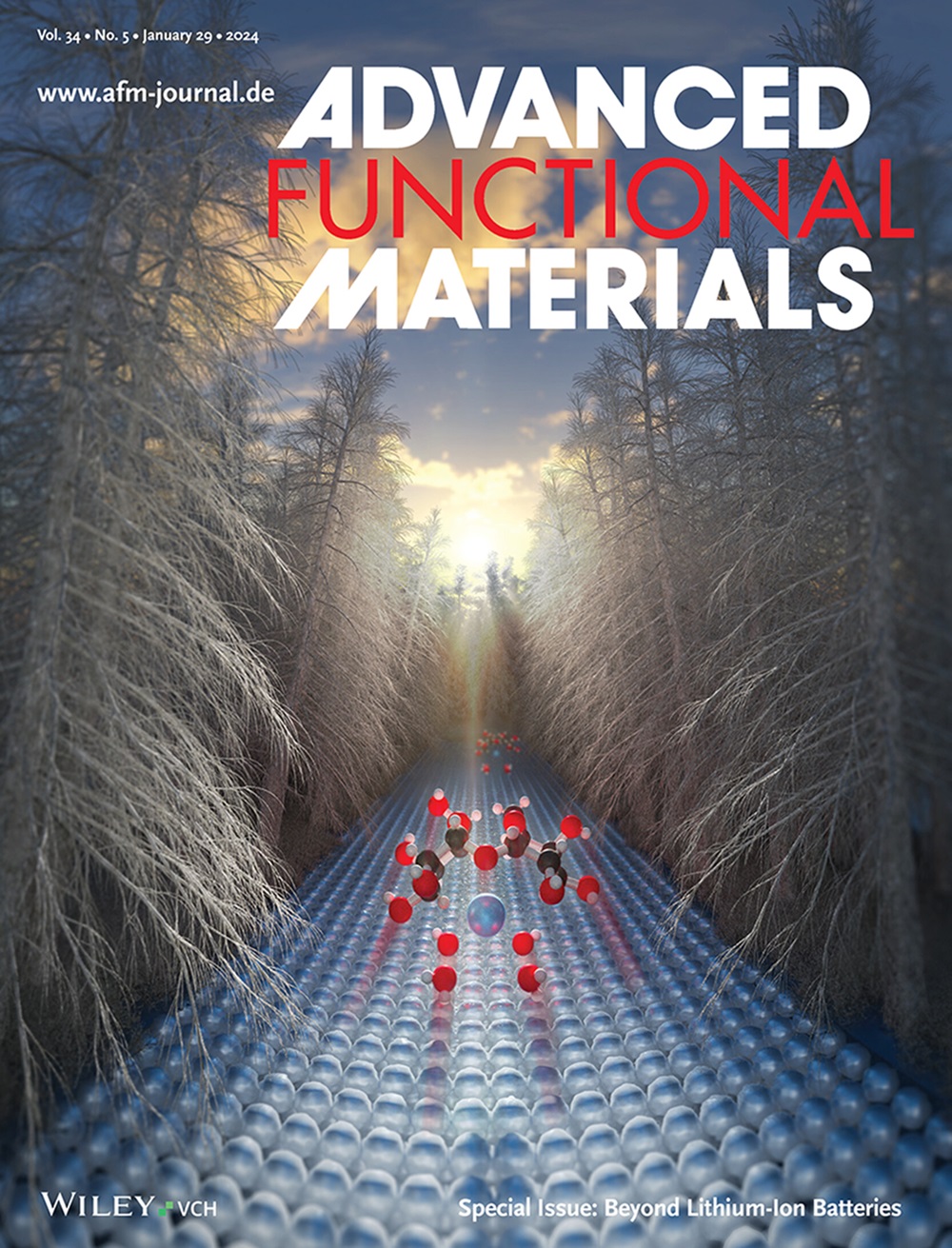Highly Ordered 2D Open Lattices Through Self-Assembly of Magnetic Units
IF 18.5
1区 材料科学
Q1 CHEMISTRY, MULTIDISCIPLINARY
引用次数: 0
Abstract
Fabrication of architected materials through self-assembly of units offers many advantages over monolithic solids including recyclability, reconfigurability, self-healing, and diversity of emergent properties – all prescribed chiefly by the choice of the building blocks. While self-assembly is prevalent in biosynthesis, it remains challenging to recapitulate it macroscopically. Recent success in the self-assembly of 2D ordered open magneto-elastic lattices from centimeter-long bar units with sticky magnetic ends, showcasing graceful failure at “magnetic bonds” and re-assembly under extreme loading. However, it is still unclear how this approach can be generalized to design units that preferably form ordered low-energy structures with desirable mechanical properties such as ductility, auxetics, and impact resistance. Here, diverse ordered 2D lattice structures are predicted as the self-assembly outcomes from units with 2 (bar), 3 (Y-shape), and 4 (cross) branches with magnetic ends. The defect formation is significantly reduced by a computational design approach. Tunable mechanical behavior is shown to be achieved by varying unit shapes and magnet orientations. Cross-shaped units are identified for their promise in auxetic response and penetration resistance with these findings validated through experiments. The work highlights the potential of self-assembling magnetic architected materials for adaptive structures, impact mitigation, and energy adsorption.

通过磁性单元自组装实现高度有序的二维开放晶格
与整体固体相比,通过单元自组装制造结构材料具有许多优势,包括可回收性、可重构性、自愈性和新兴特性的多样性--所有这些都主要由构建模块的选择决定。虽然自组装在生物合成中非常普遍,但要从宏观上再现它仍然具有挑战性。最近,人们成功地从一厘米长的带有粘性磁性末端的棒状单元自组装出二维有序开放磁弹性晶格,展示了 "磁键 "的优雅失效以及在极端负荷下的重新组装。然而,目前还不清楚如何将这种方法推广到设计单元,使其最好能形成具有理想机械性能(如延展性、辅助性和抗冲击性)的有序低能结构。在此,我们预测了多种有序的二维晶格结构,这些结构是具有 2 个(条形)、3 个(Y 形)和 4 个(十字形)磁性末端分支的单元自组装的结果。计算设计方法大大减少了缺陷的形成。通过改变单元形状和磁体方向,可实现可调机械性能。十字形单元在辅助响应和抗穿透性方面的潜力得到了确认,这些发现通过实验得到了验证。该研究成果凸显了自组装磁性结构材料在自适应结构、减缓冲击和能量吸附方面的潜力。
本文章由计算机程序翻译,如有差异,请以英文原文为准。
求助全文
约1分钟内获得全文
求助全文
来源期刊

Advanced Functional Materials
工程技术-材料科学:综合
CiteScore
29.50
自引率
4.20%
发文量
2086
审稿时长
2.1 months
期刊介绍:
Firmly established as a top-tier materials science journal, Advanced Functional Materials reports breakthrough research in all aspects of materials science, including nanotechnology, chemistry, physics, and biology every week.
Advanced Functional Materials is known for its rapid and fair peer review, quality content, and high impact, making it the first choice of the international materials science community.
文献相关原料
| 公司名称 | 产品信息 | 采购帮参考价格 |
|---|
 求助内容:
求助内容: 应助结果提醒方式:
应助结果提醒方式:


